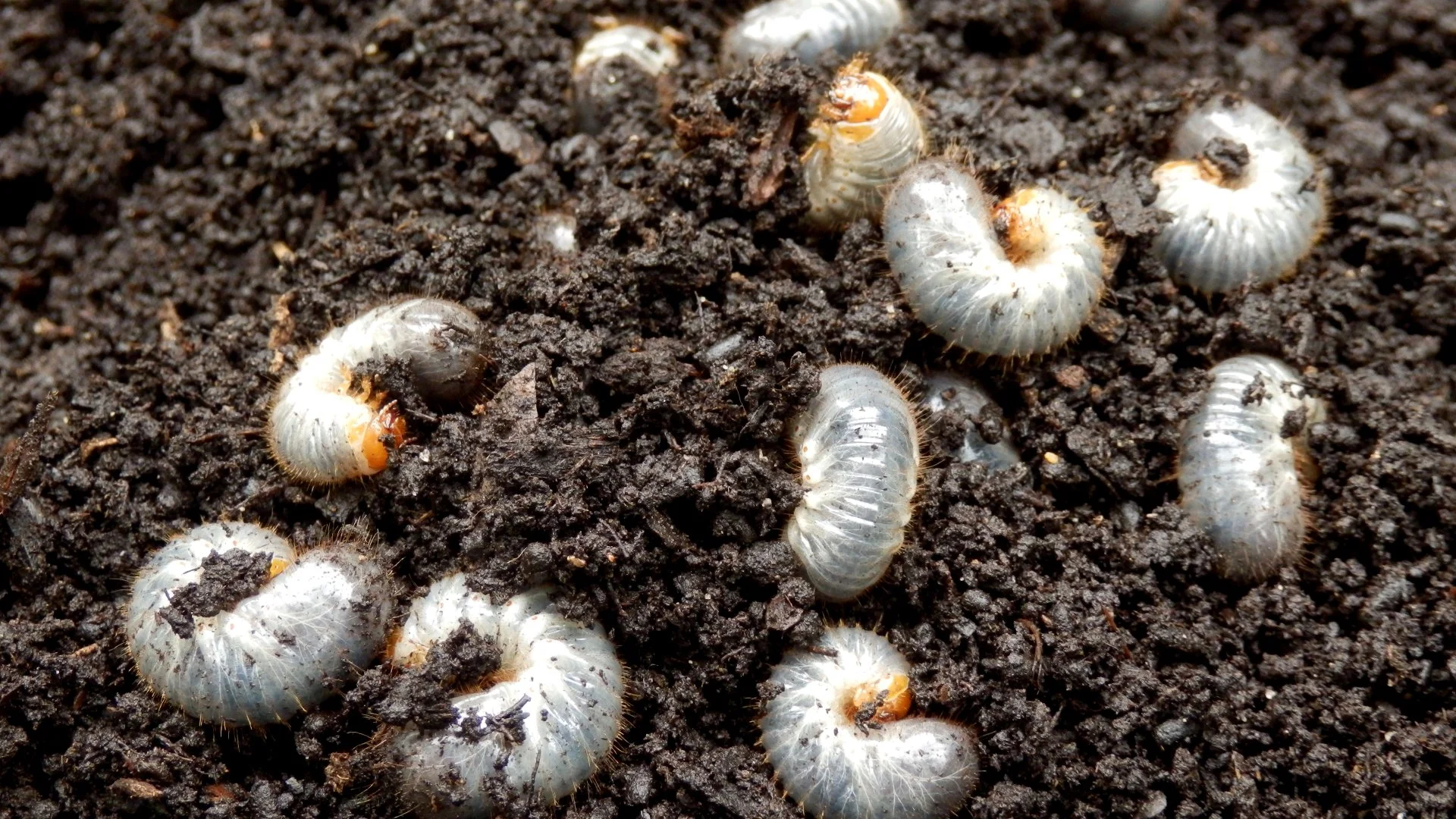Are the plants in your garden looking a little lackluster lately are there patches in your yard that have gone dead and dry? If so, you may be dealing with a grub problem.
Grubs are small, white, c-shaped larvae that live in soil and feed on organic matter such as plants and tree roots. These insects can lay dormant in your soil for weeks at a time without anyone noticing, and to make matters worse, often attract other pests like moles to your property. Fortunately, you can usually prevent a grub problem from getting out of control, as long as you catch it in the early stages. Keep reading for everything you need to know about grubs and how to get rid of them, courtesy of our experienced pest control professionals at Purple Care.
Signs You May Have a Grub Problem
Again, you may notice dead patches in your lawn, garden, or greater landscaping if grubs have invaded your property. The key is to act quickly, before they grow bigger and move deeper into the soil for protection. This usually happens in late fall, after grubs have spent the summer feasting on the roots in your soil. If you do not catch them before the soil warms up in spring, they may mature, eventually transforming into beetles and starting this whole cycle over again.
You may be dealing with a grub problem if:
- Your lawn feels spongy, as if someone has put down fresh sod.
- There are dead patches on your lawn that can be peeled back like loose carpet.
- Your property is steadily being invaded by more and more pests, such as moles, raccoons, or armadillos.
How To Get Rid Of Grubs On Your Property
The best way to prevent a grub infestation from damaging your lawn is simply to keep an eye out for signs that you have a problem. The tricky part is being vigilant, since properties that receive regular lawn care may be more susceptible to grub infestations. While a healthy lawn can take longer to reveal patches of grass that have been damaged, a dry, underwatered lawn will instantly show you where grubs have been feasting.
The good news is that with Purple Care, you never have to choose between a well-maintained lawn and a pest-free property. We offer lawn care to keep your home or business looking great year-round, as well as grub control to ensure your grass and plants are never affected by these destructive larvae. Look out for signs that there may be grubs under your grass, and never hesitate to request preventative grub treatment from our experienced lawn and pest professionals
This summer, schedule top-notch grub control by calling Purple Care at (817) 880-6052. You can also request service online.




Comments (0)
Thanks for your comment!
Thanks for your feedback! Your comments have been successfully submitted! Please note, all comments require admin approval prior to display.
Error submitting comment!
There is a problem with your comment, please see below and try again.